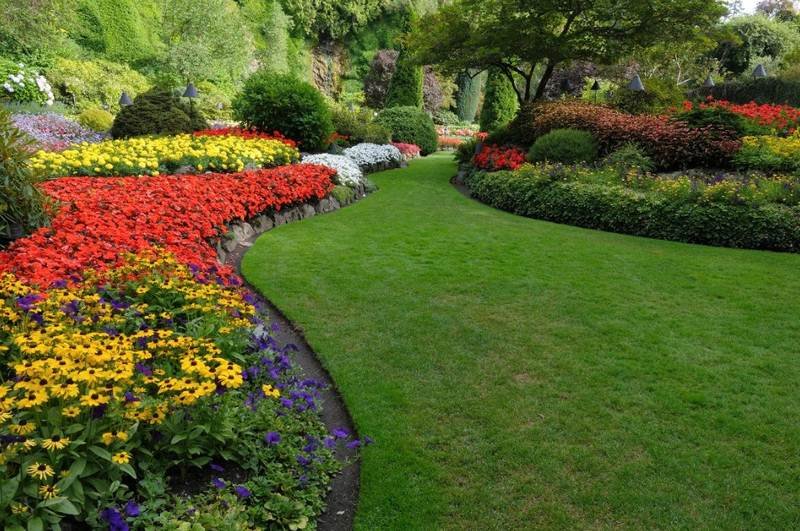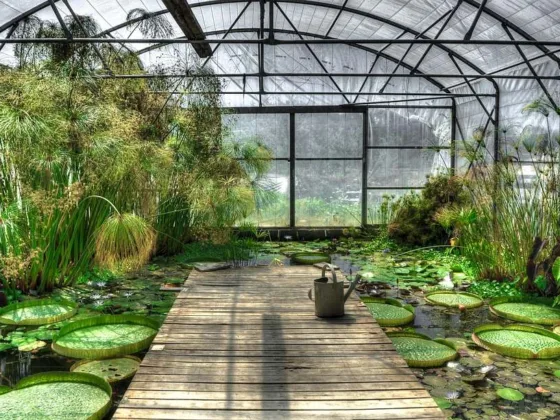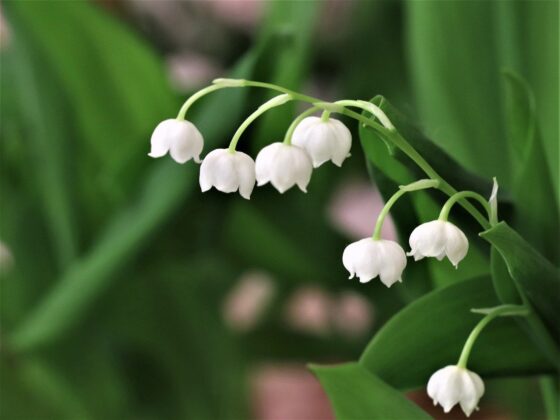Table of Contents Show
Lawns are built around the house not only to increase their value or add beautification but, contribute to enhance the quality of life. As a part of society, it is our obligation to contribute to its well-being, and taking care of a lawn is the least we can do for nature.
In return, the lawn provides us with healthy air to breathe and improves our mental, emotional, and physical health. However, with our busy routines, it is quite difficult to guard the lawn regularly but still, it doesn’t undermine the value lawn care and maintenance holds.

5 Basic Lawn Care and Maintenance Tips
Maintaining a lawn is not just a vanity project but holds an important value in the larger environment.
The people around it can avail themselves of multiple benefits from trees, shrubs, and grass, and trust me, lawn care and maintenance can make a huge difference for you and your loved ones. So, without any further due we will be looking at basic tips for your lawn care and maintenance.
Read Also:
1. Knowing
Firstly, you must understand your lawn to know how to take care of it in the best possible manner. Not only seasons, but the location also differs in the kind of soil, grass, plant, etc. that would complement your lawn. Planting a new lawn can be a lot of fun but it requires a little planning or help from a gardener.
It is ideal to start by checking the pH of the soil to exactly know the benefits it can provide and in what environment. With that information in hand, you will know which plants would be ideal for your lawn and whether you need more acidic or alkaline-based pesticides or other materials for the lawn.
2. Aerating
With the ideal base for your garden, you must take care of the air your soil is able to get. One of the basics of nutrition lawn demands is air. Soils become flattened with a certain period, especially if there is a lot of foot traffic which closes the door for oxygen, air, water, and other nutrients from reaching the roots of plants and grass.
Aerating is a process to provide extra air to the plants and lawn which refreshes the inner system and regulates the working inefficient manner.
This procedure can be done in many ways, you may simply do it by poking a fork manually or by extracting a plug of soil using a mechanical device specifically designed for aerating purposes.
There are some other manual tools, you may use depending on the condition of your lawn. No matter, where you live in autumn is the best weather to aerate your lawns.
3. Feeding
Next up, is the food soil needs. Soil too needs regular meals, unlike humans their meal intervals are thrice in a few months. Fertilizers and pesticides are a few names of lawn feeds. These are the keys to a beautiful green lawn.
You may simply buy regular fertilizers and if necessary depending on the condition of the lawn you may consult a gardener to help you choose the best fertilizer.
Consulting a gardener can be more beneficial since he may also inform you regarding any additional pesticide you require for the hidden insects in your lawn.
It is best to feed your lawn during early spring to assist them in jump-starting root development in summer. After summer, you can feed your lawn again to repair it from the damages that occurred during summer. Further, it will also prepare your lawn for the coming winter and the damages it could bring.
These feeds can be applied in multiple ways from spreading it simply on the top after aerating or slightly pushing them under the soil. There are multiple other ways too, which you may follow as per the product instructions.
4. Watering
With feed, a lawn requires regular watering. However, this varies a lot depending on your location. Since few countries have humid climates or have frequent rain might not require watering while on the other hand, sunny regions or dry areas would demand a lot more watering than too on a regular basis.
If you don’t have time for regular watering, then you can figure out just by looking at the grass when to water them.
With the tips of your grass turning yellow, you will be alarmed that it’s high time to water them. This might be a little late but it’s always better than never. Grass would be better with one heavy watering compared to the regular light sprays. This would be easier and cheaper so, providing a good drenching in heat can be enough.
5. Trimming
Moving on to the next tip, trimming. The basic tip is not to trim when your grass is wet and remember to use a sharp lawnmower blade. With a blunt blade, the grass would be uneven and shredded which would be quite harmful to its growth and well-being.
The poor trimming of grass would make it more vulnerable to various pests, insects, and diseases; it will also need a lot more nutrients to repair the damaged grass.
One more important tip, you must remember is not to trim it too much. It will also increase risk and require a lot of time to recover. However, if done in the right way grass could be healthier, thicker, and expand quickly.
It will also be immune to various problems and diseases. As for the seasons, it is highly recommended to trim regularly during autumn, spring, and summer.
With the mentioned fundamental lawn care and maintenance tips, you can enjoy a healthy fresh lawn for a walk, a cup of tea, or simply for gazing at the stars. Lawn care and maintenance do not require a lot of time or effort as it seems so, following these simple tips you will be able to have a healthy and presentable lawn.
To add extra nourishment, you may apply weed killers, or other pesticides to ensure the healthy growth of your lawn. With trimming, you can also remove thatch regularly since, it blocks sunlight, water, and air to the roots.









